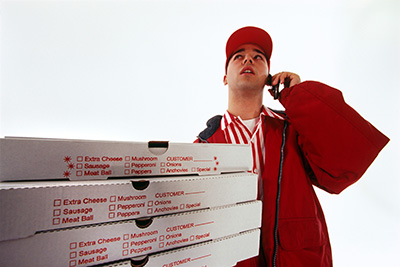Yum, the parent company of Pizza Hut, KFC, Taco Bell and Habit Burger, announced its second-quarter results. Overall, sales and unit growth were both up, but there were some challenges, especially when it came to delivery.
According to Yum CEO David Gibbs, Pizza Hut, “declined 3 percent, driven by flat unit growth and a 4 percent decline in same-store sales, driven in large part by continued operational challenges in our delivery business.”
The big issue: staffing. He said the company is reworking how it hires drivers, speeding up that process to match the speed of hiring across the delivery industry, but it’s still a challenge. As Pizza Hut reworks that process, the whole company continues to expand what it has dubbed “delivery-as-a-service” (DAAS if you need another acronym).
The feature was integrated into points of sale across Yum’s four brands early in the second quarter of 2022, and since then it’s grown significantly.
“We made progress expanding systemwide adoption of third-party delivery-as-a-service to help address our delivery driver capacity constraints to meet consumer demand. As of the end of Q2, approximately 55 percent of our U.S. locations have implemented delivery-as-a-service, up from 40 percent at the beginning of the quarter,” said Gibbs.
He said as the quarter ended, about 70 percent of eligible restaurants had opted into using at least one aggregator marketplace, up from 45 percent at the beginning of the quarter. He said only about 35 percent of eligible restaurants were using multiple aggregators, saying we’ve “got further to go on implementing marketplaces across the business.”
The key to implementing and scaling to more than 13,000 restaurants (70 percent of Yum’s 19,000 U.S. locations) was, of course, technology. Gibbs called out Dragontail Systems, which Yum acquired in September of 2021, as making that easier.
As Food On Demand has covered in the past, Dragontail is an “end-to-end” technology suite that makes the whole food delivery process easier in various ways. Integration was important last quarter, but especially important for Gibbs at this point is ensuring food is ready exactly when the driver arrives so it’s as fresh as it would be for an internal delivery driver. He said there’s a high correlation with turning on Dragontail and higher consumer sentiment.
“Whenever we implement [Dragontail], we see a significant improvement in customer experience. One of the exact places where we see that benefit is coordinating those delivery orders and ensuring that we have fresh product coming right out of the oven or the fryer,” said Gibbs. “That’s what helps us to get a fresher, hotter product to the customer.”
He said the company is still testing exactly how to use the tool, and has found some interesting ways to streamline operations.
“There are other benefits to Dragontail, as well. You see that it helps to communicate the team members in the back of house when we’re reaching a peak period in the restaurant, for example, and they can move into different operating modes to respond to that,” Gibbs added.
The adoption of third-party delivery to fill in at Pizza Hut and enhance off-premises across other Yum brands will be something to watch. As proven by Zalat Pizza, pizza delivery can work very, very well on third-party delivery. To do so at the incredible scale of Pizza Hut and Yum, however, is quite an undertaking that seemingly requires some major transformation.


